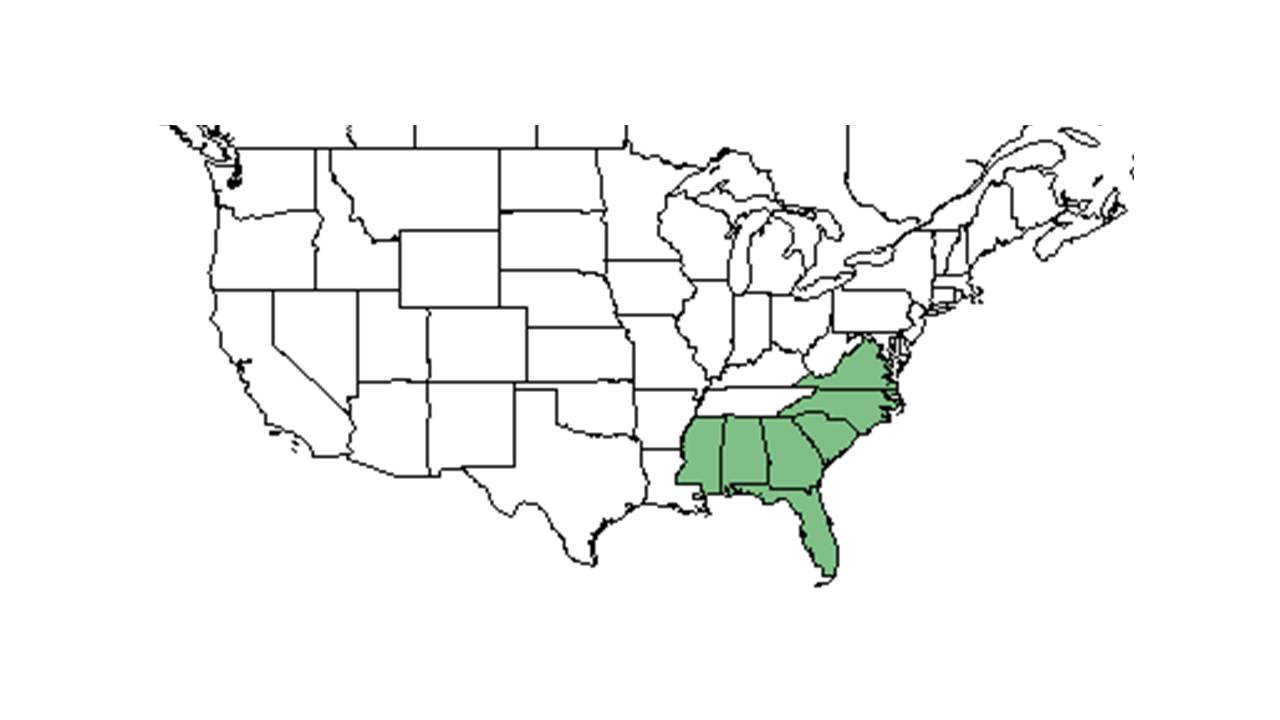Pycnanthemum flexuosum
| Pycnanthemum flexuosum | |
|---|---|

| |
| Scientific classification | |
| Kingdom: | Plantae |
| Division: | Magnoliophyta – Flowering plants |
| Class: | Magnoliopsida – Dicotyledons |
| Order: | Lamiales |
| Family: | Lamiaceae ⁄ Labiatae |
| Genus: | Pycnanthemum |
| Species: | P. flexuosum |
| Binomial name | |
| Pycnanthemum flexuosum (Walter) Britton, Sterns & Poggenb. | |

| |
| Natural range of Pycnanthemum flexuosum from USDA NRCS Plants Database. | |
Common name: Appalachian mountainmint
Contents
Taxonomic notes
Description
"Herbaceous perennials with elongate rhizomes and erect, quadrangular freely branched stems. Inflorescence compact cymules, often head-like, arranged in thryses or terminal at the ends of branches. Calyx 5-toothed, zygomorphic to actinomorphic; corolla zygomorphic, 2-lipped, upper entire or notched, lower 3-lobed. Stamens 4, usually exserted; stigmas 2-clet, exserted." - Radford et al 1964
"Plant canescent; stems 4-11 dm tall, the angles sharp to rounded. Leaves elliptic to elliptic-lanceolate, 1.5-5 cm long, 3-15 mm wide, acute to obtuse, crenate with 1-4 teeth on each margin, rarely entire, base cuneate to rounded; petioles 0.5-5 mm long. Inflorescence head-like, flat-topped to high-domed corymb, each cymules 2-4 cm broad, becoming somewhat open in fruit; bracts canescent, aristate, often whitened. Calyx slightly zygomorphic , tube 4-4/5 mm long, teeth usually white, acicular, erect to spreading, 2.3-3.3 mm long; corolla white to lavender, 4-6 mm long. Mericarps dark brown, 1-1.3 mm long, oblong-ovoid, long bearded at apex." - Radford et al 1964
Distribution
It is found in moist to wet pinelands, pocosin margins, savannas, and bogs (Nelson 2006).
Ecology
Habitat
In the Coastal Plain in Florida and Georgia, P. flexuosum can be found in low pinelands near pond edges, swales bordering cypress-gum swamps, open annually burned pine stands, well drained slopes, and in flats between the hills of longleaf pine forests (FSU Herbarium). It can also be found in drying loamy sand of grassy roadsides, floodplain clearings along rivers, open marshy areas, boggy areas, fields, and a swale in a burned and cutover upland longleaf pine savanna (FSU Herbarium). Associated species include pine, oak, cypress, sweetgum, and longleaf pine (FSU Herbarium).
Phenology
Blooms June through September (Nelson 2006).
Seed dispersal
Seed bank and germination
Fire ecology
Pollination
Use by animals
Diseases and parasites
Conservation and Management
Cultivation and restoration
Photo Gallery
References and notes
Florida State University Robert K. Godfrey Herbarium database. URL: http://herbarium.bio.fsu.edu. Last accessed: July 2015. Collectors: Loran C. Anderson, Ed Keppner, Lisa Keppner, R. A. Norris, Robert K. Godfrey, Steve L. Orzell, R. F. Doren. States and Counties: Florida: Bay, Jefferson, Leon, Wakulla, Washington. Georgia: Grady, Thomas. Compiled by Tall Timbers Research Station and Land Conservancy.
Nelson, Gil. Atlantic Coastal Plain Wildflowers: A Field Guide to the Wildflowers of the Coastal Regions of Virginia, North Carolina, South Carolina, Georgia, and Northeastern Florida. Guilford, CT: FalconGuide, 2006. 62. Print.
Radford, Albert E., Harry E. Ahles, and C. Ritchie Bell. Manual of the Vascular Flora of the Carolinas. 1964, 1968. The University of North Carolina Press. 918. Print.